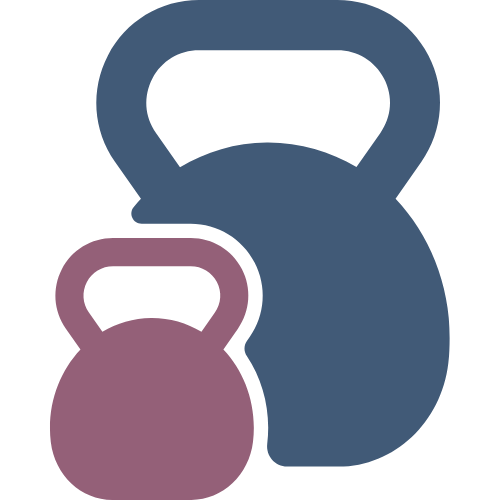During our 7-part skills series, we'll introduce you to skills that help you develop a better relationship with your body, awareness of your movements, and build a foundation of strength for doing any type of physical activity.
Hip hinging exercises use mostly the hip joint, with some movement in the ankle and knees (but much less so than squats).
A proper hip hinge allows your lower back to stay completely still (under tension, rather than bending), while your hip, buttocks, and hamstring muscles are working and strengthening.
Unfortunately, people without too little flexibility and too much ego try to do too much resistance too soon and end up bending at their lower back and in pain. Get the movement pattern first, then slowly add resistance to avoid this.
Broomstick Drill
Start by using a broom or mop stick.
Hold it vertically against your spine with one hand holding it at your lower back, the other at your neck.
Make contact with the stick at the back of the head, upper back (between shoulder blades), and tailbone or upper buttocks - this is “neutral” spine, where there are curves away from the stick at your lower back (lumbar spine) and neck (cervical spine), and towards the stick with your tailbone and upper back (thoracic spine).
Bend your knees very slightly (this is so your hamstrings don’t restrict your movement).
Keeping the same contact points on the broom, shift your hips backward. Continue moving until you feel one of the contact points losing contact with the stick.
Stop just before losing contact. This is your current range of motion - respect this boundary.
When you have a feel for this drill, simply pretend the stick is there and let your arms hang in front of you, sliding up and down your thighs.
Next, you’re ready to add resistance and build your range of motion. Some people are able to maintain a neutral spine reaching all the way to the ground with heavy resistance, and others might be challenged with several inches.
Wherever you are, just focus on improving both your strength and your range of motion over time - there’s no competition or finish line!
Where do things go wrong in the hip hinge? They go wrong usually when people hinge at their upper back or lower back, rather than their hips. The upper and lower back should remain totally still (like in a plank) while the hips push back and forward. The reason people move at their back instead of hips is usually because their back is weak (unable to remain in tension) and their hips are stiff and tight, not allowing movement. This is why it’s so critical not to rush adding too much weight or ROM too soon.
Hip Hinging Variations
You may have seen or tried some of these movements; they all require hinging mainly at the hip joint, with minimal to no movement in the ankle, knees, and torso/spine.
- Bridges
- Good morning
- Sumo deadlift
- Romanian deadlift
- Straight legged deadlift
- Single leg deadlift
- Windmill
- Kettlebell swings
